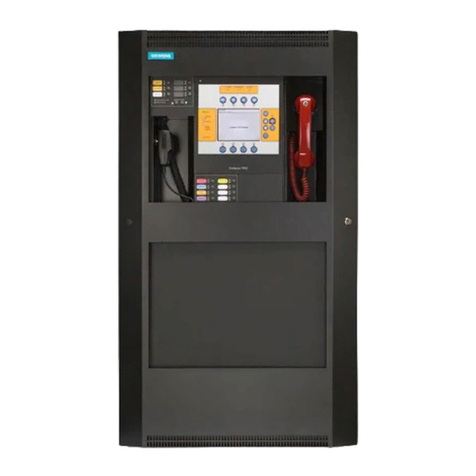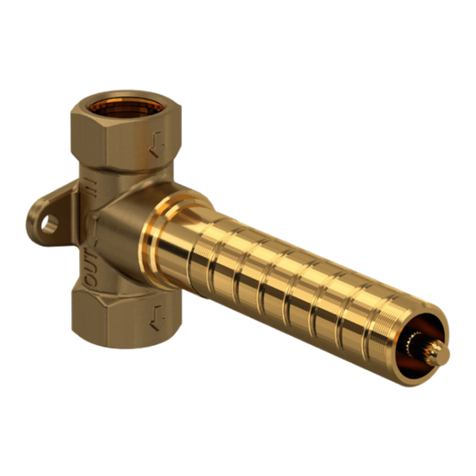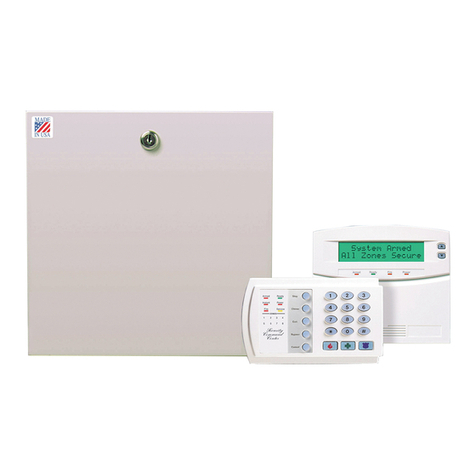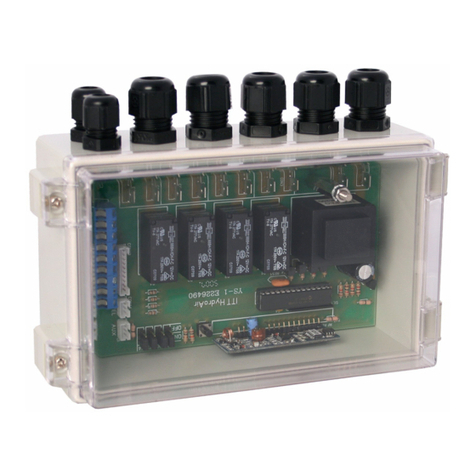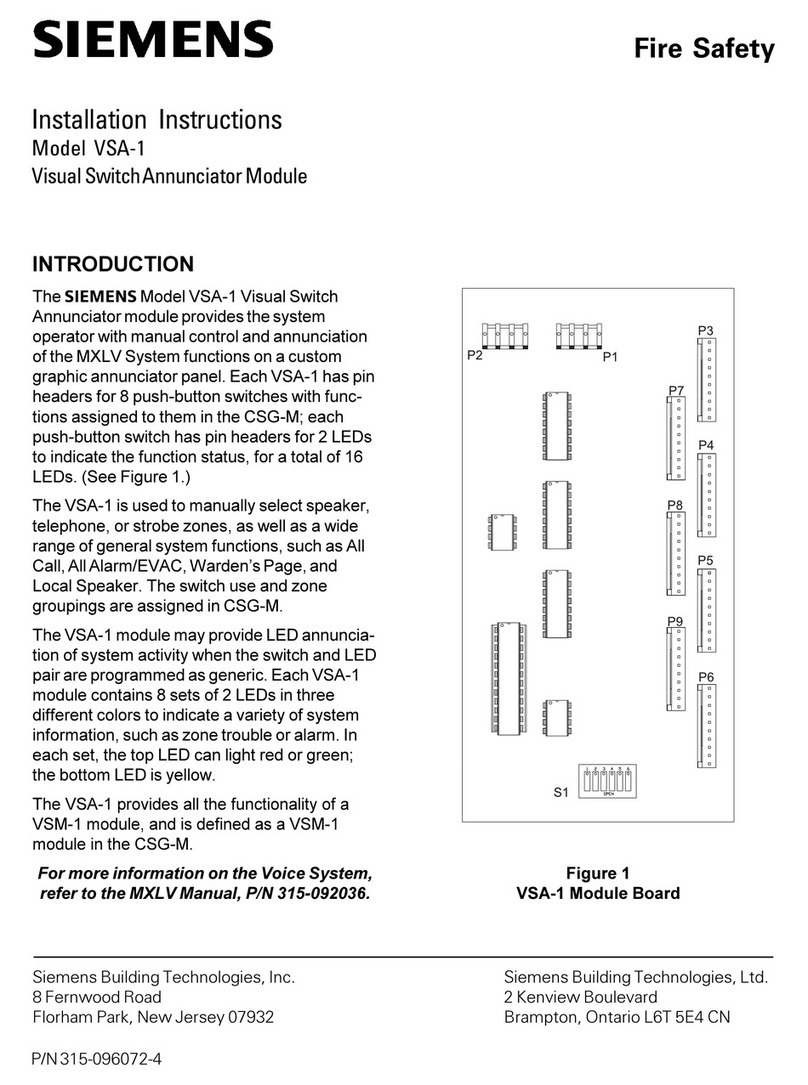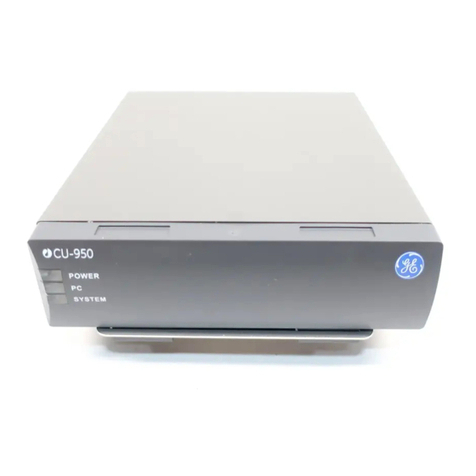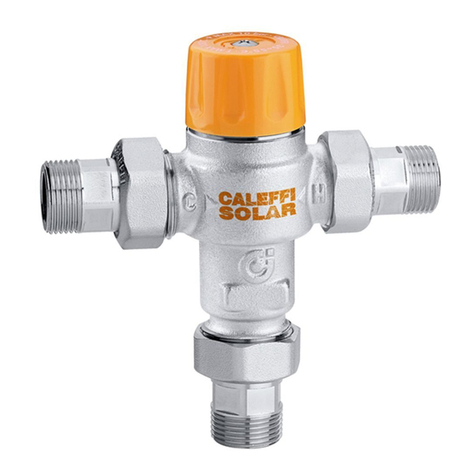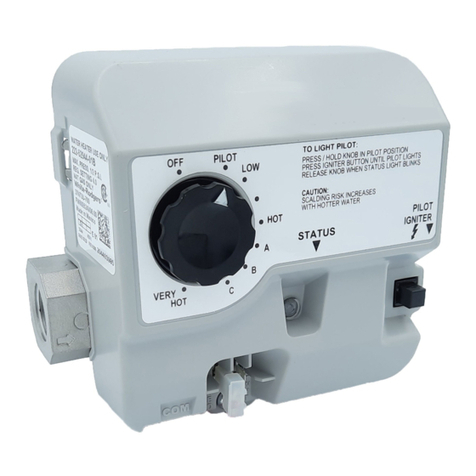fesing SSIF2P15S48100C Instructions for use

LITHIUM
BATTERY
Application Manual

Read and follow these instructions!
The following precautions are intended to ensure your safety and prevent property damage. Before
installing this product, be sure to read all safety instructions in this document for proper installation.
Failure to comply with the instructions with this symbol may result in a
serious accident, causing death or a severe injury.
Failure to comply with the instructions with this symbol may result in a
serious accident, causing a severe injury.
Failure to comply with the instructions with this symbol may result in
minor or moderate injury.
Provides information considered important but not hazard-related.
The information relates to property damage.
Read instruction before use
Risk of electric shock
Operate as specified by the manual
This product is designed to an integrated system, which must be performed by a qualified person
trained in electrical engineering and familiar with the characteristics and safety requirements of
lithium batteries. Do not use this product if you are unsure if you possess the necessary skills to
complete this integration.

Table of Contents
1. Precautions.................................................................................................................................4
1.1 General Safety Precautions......................................................................................................4
1.2 Installation Precautions.............................................................................................................4
2. Product Introduction....................................................................................................................5
2.1. Front Panel Function Introduction............................................................................................5
2.2 Product Specifications ..............................................................................................................6
2.3 State Indicator ..........................................................................................................................8
3. Unpack the Battery......................................................................................................................8
3.1 Parts List...................................................................................................................................9
3.2 Visual Inspection of the Modules ............................................................................................10
4. Battery Installation........................................................................................................................10
4.1 Battery Module Installation......................................................................................................12
5. Cable Connection.........................................................................................................................13
5.1 Single Battery Connection ..................................................................................................13
5.2 Connect Cables of the Multiple Batteries in Parallel................................................................17
5.3 Visual Inspection of the Connection........................................................................................20
6. Activate the Product.....................................................................................................................20
6.1 Start the Battery......................................................................................................................20
6.2 Monitoring the Battery.............................................................................................................20
7. Inspection, Cleaning and Maintenance.........................................................................................22
7.1 General Information................................................................................................................22
7.2 Inspection...............................................................................................................................23
7.3 Cleaning .................................................................................................................................23
7.4 Maintenance...........................................................................................................................23
7.5 Storage...................................................................................................................................23
8. Troubleshooting ...........................................................................................................................24
9. Battery recovery...........................................................................................................................25
10. Transportation Requirements.....................................................................................................26

1. Precautions
1.1 General Safety Precautions
The product provides a safe source of electrical energy when operated as intended and as designed.
Potentially hazardous circumstances such as excessive heat or electrolyte mist may occur under
improper operating conditions, damage, misuse and/or abuse. The following safety precautions and
the warning messages described in this part must be observed.
If any of the following precautions are not fully understood, or if you have any questions, contact us
for guidance.
Risks of explosion
Do not subject the battery to strong impacts.
Do not crush or puncture the battery.
Do not dispose of the battery in a fire.
Risks of fire
Do not expose the battery o temperatures in excess of 60℃.
Do not place the battery near a heat source such as a fireplace.
Do not expose the battery to direct sunlight.
Do not allow the battery connectors to touch conductive objects such as wires.
Risks of electric shock
Do not disassemble the battery.
Do not touch the battery with wet hands.
Do not expose the battery to moisture or liquids.
Keep the battery away from children and animals.
Risks of damage to the battery
Do not allow the battery to come into contact with liquids.
Do not subject the battery to high pressures.
1.2 Installation Precautions
Please be aware that a battery presents a risk of electrical shock including high short-circuit current.
Follow all safety precautions while operating the batteries.
Remove watches, rings, and other metallic accessories.
Use tools with insulated handles in order to avoid inadvertent short circuits.
Wear rubber gloves and safety boots.

Do not put tools or any metal parts on the top of the batteries.
Disconnect charging source and load before connecting or disconnecting terminals.
When moving batteries and wear all appropriate safety clothing and equipment.
Do not open or mutilate the batteries.
▪Verify polarity at all connections before energizing the system. Reverse
polarity at the battery terminals will void the Warranty and destroy the
batteries. Do not short circuit the batteries.
▪Do not combine Lithium Batteries with other brands or chemistries; Do
not mix Lithium Batteries from different installations, clients, or job sites.
▪Do not disassemble or modify the battery. If the battery housing is
damaged, do not touch exposed contents.
2. Product Introduction
48 V series lithium iron phosphate battery system has been designed to provide power backup for
remote or outside telecom plants like Access Terminals, Base Transceiver Stations, and Base
Station Controllers. This system has the characteristics of high system integration, well reliability,
long service life, and wide operating temperature range.
2.1. Front Panel Function Introduction
In order to operate the product correctly, please carefully view the function of the front panel of the
battery.

Figure 2-2: Front Panel Function Introduction
1. Reset: When the BMS is in the dormant state, press the button for 1S to activate the BMS.
Meanwhile, the LED indicator will be lit to show SOC of the battery. When the BMS is in the active
state, press the button for 3S to cause battery dormant. Then the LED indicator light will be lit from
"RUN" for 0.5 seconds.
2. ADD: DIP switch, used for setting the product communication address when communication
cascade;
3. SOC: These 4 LEDs are used to display the pack SOC. The lightning of these LEDs indicates the
SOC of 25%, 50%, 75%, and 100%. For example, when SOC >75%, all 4 LEDS will be light up. If
SOC> 50% and <75%, 3 LEDs will be light up. Etc.
4. ALM: Warning light;
5. RUN: Indicate the alarm or the run status of the battery.
6. RS485: Communication interface: Used for RS485/CAN communication;
7. RS232: Connect with upper computer for battery system debugging and software upgrade.
8. Handle: It was used to carry/move the battery.
9. Used for fixing with cabinet.
10. Positive output terminal.
11. Negative output terminal.
2.2 Product Specifications
Table 2-1: Product Specifications

Basic Parameters
Model
SSIF2P15S48100C
Anode Material
LiFePO4
Nominal Voltage(V)
48
Layout
15S1P
Rated Capacity(Ah)
100(0.5C,25℃)
Rated Energy(kWh)
4.8
Dimensions(W×D×H)mm
440×350×222(5U)
Weight(kg)
43.5(About)
Communication
RS485,CAN
Cycle Life
6000+(80%DOD,25℃)
Electrical Characteristics
Voltage Window(V)
40.5~54
Charge Current(A)
50(Recommend)
Max Charge Current(A)
100
Max Discharge Current(A)
100
Operation Environment
Charge Temperature(℃)
0℃~50℃(Optimum15℃~30℃)
Discharge Temperature(℃)
﹣20℃~50℃(Optimum5℃~45℃)
Storage Temperature(℃)
﹣20℃~55℃
Storage Humidity(RH)
5%~90%
Working Humidity(RH)
5%~90%
Protection Class
IP20
Products specifications described herein are subject to change without prior notification.

2.3 State Indicator
Table 2-2: State Indicator
System Mode
Abnormal event
RUN
ALM
Capacity LED
De-energized/
shutdown Mode
No light
No light
All no light
Stand-by Mode
Normal
Flash 1
No light
Indicate the SOC
Alarm
Flash 1
Flash 2
Indicate the SOC
Charging
Normal
Light
No light
Indicate the SOC, the higher LED flash 2
Alarm
Light
Flush 2
Indicate the SOC, the higher LED flash 2
Over charge
protection
Light
No light
All light
Temp
protection
Flash 1
Flash 2
Indicate the SOC
Overcurrent,
fail protection
No light
Light
All no light
Discharging
Normal
Flash 3
No light
Indicate the SOC
Alarm
Flash 3
Flash 2
Indicate the SOC
Low voltage
protection
Flash 3
No light
All no light
Overcurrent,
Short Circuit
protection
No light
Light
All no light
Failure
No light
Light
All no light
Flush 1: Light 0.25s and no light 3.75s; Flash 2: Light 0.50s and no light 0.50s;
Flush 3: Light 0.50s and no light 1.50s
3. Unpack the Battery
The battery and the related accessories are packed in the carton box and steel belt wooden box. Use
tools to open the packing box. After open the packing box, confirm the product components

according to the parts list.
3.1 Parts List
Check the parts during unpacking.
Table 3-1: Parts Lists
No.
Items
Appearance
Usage
Remarks
1
Battery
Provide power
2
Positive output
cable
Connect the battery and
inverter
3
Negative output
cable
Connect the battery and
inverter
4
RS485
communication
line
Apply to Modbus
protocol. Connect the
battery and the
computer.
Used to
monitor and
debug the
battery
5
RS485
communication line
Battery cascade line.
Connect the RS485
communication interface
between the adjacent
battery
Standard
RJ45
network
cable
Violent unpacking is strictly prohibited. If the battery system is found to be
broken, deformed or other abnormal conditions, the user shall immediately
stop using the battery and contact us.

6
Cabinet bolt
Fix the battery on the
rack or cabinet
Table 3-2: Recommended Tools andInstruments
No.
Items
Usage
Appearance
1
Phillips Screwdriver or Bit
To fasten battery and
assemblies
2
Box Cutter
Opening boxes
3
Insulated TorqueWrench
Installing cables and busbars
4
Insulated Sockets
Installing cables and busbars
5
Battery Tester
Measure battery module’s
voltage
3.2 Visual Inspection of the Modules
After transporting the modules to the installation location, check for:
Physical damage to the exterior
Damaged or protruding screws
4. Battery Installation
This system must be installed by qualified, trained workers familiar with the required instruments.
The battery can be used in indoor environments where the ambient temperature and humidity are not
controlled where the humidity can reach 90%.

▪Be sure to use insulated tools (torque wrench, extension, socket, etc.).
▪All the instruments must be insulated and no metal articles (e.g. watch,
ring) shouldbe present in the installation area.
▪All power switches must be turned off in advance.
▪Prepare a CO2 fire extinguisher, a first aid kit, and an AED (automated
external defibrillator) before installation.
Arc Flash and Shock Hazard
Insulated tools are required for any work on this energizedequipment.
Sharp Edges
Wear gloves and other protective gear to prevent injury.
Pinch Point
Use caution when working in the enclosure to prevent injury.
Heavy Object
Can cause muscle strain or back injury.
Use lifting aids and proper lifting techniques when moving trays, batteries
and otherheavy objects.

4.1 Battery Module Installation
1. Smoking and sparks are prohibited near batteries.
2. Use installation tools with insulated handles. Otherwise, the batteries
may burn out and injury may be caused.
3. Before handling batteries, wear goggles, rubber gloves, and protective
clothes. Remove conductors such as jewelry or watches.
4. Do not use metal to simultaneously touch two or more terminals of the
battery or simultaneously touch a terminal of the battery and a grounded
object (for example, the battery cabinet). Otherwise, short circuits will
occur, which may produce sparks.
5. Battery system must be equipped with firefighting equipment, such as
fire sand, dry powder fire extinguishers.
6. It is strictly prohibited to place installation tools on the battery during
battery installation. After installation, it is strictly prohibited to pile up
sundries on the battery.
1. Transport battery modules to the installation location.
3. Place the battery modules on the rack frame or cabinet.
4. Fix the battery on the rack. Using the cabinet bolt to fix the battery into the hole on the rack.
5. After installation, tighten all bolts.

Figure 4-1: Battery Module Installation (A possible battery install procedure)
1. Please confirm the rack tray load bearing before installation.
2. Please make sure the rack depth meets the requirements before
installation.
3. Support for 19" mounting, there should be rails and pallets, and make
sure the load bearing meets the requirements.
4. In multiple sets of scenarios, installation gap is required. The installation
space of a single battery module should be at least larger than then
battery height. Direct stacking and vertical stacking are not supported.
5. Starting from the bottom up.
5. Cable Connection
5.1 Single Battery Connection

▪Before connect the cable with the inverter, the worker must confirm the
output switch of the inverter has been turn off, to prevent the risk of fire
or electric shock.
▪Before connection, make sure to close the battery.
▪Please follow the instructions to protect the module BMS againstdamage.
▪DO NOT deviate from the sequence of steps below.
▪Exercise extreme caution prevent the terminals from contacting anything
except their intended mounting points.
▪Terminals and their connected wires have either positive or negative
polarity (Positive: +; Negative-). The polarity of a terminal or a wire
connected to the terminal is on the front of each module. Exercise
extreme caution to prevent the terminals and/or wires with opposite
polarity from contacting with each other.
▪In telecom and battery, it is typically designed that positive is grounded.
Therefore, it is necessary to avoid any non-insulating contact between the
negative terminal and the positive terminal of the battery or the rack during
the connection process. This can effectively avoid issues such as
sparking or short circuit.
▪The maximum voltage of the battery is no more than 60V, which is higher
than the safe voltage of 36V. Therefore, we still recommend that the
battery terminals or other exposed parts should not be directly touched
during the installation.
▪When tightening the screws, make sure they are at a straight angle from
the battery module terminals to avoid damage to the nuts inside.
▪Assemble the screws using a Phillips-head within the fasteningtorque of
less than 8.0 Nm (79.88 kgf/cm).

▪The power terminals, such as “+,” “-,” of the module are covered with the
protecting cover to guard against a short circuit (Shown in Figure 5-1).
▪You must remove the insulation cover prior to connecting and reattach
the insulation cover immediately after connecting.
Figure 5-1: Install the Grounding Wire
Step 1 Wear the protective gloves. Step 2 Install the battery ground cable.
Step 3 Install negative and positive power cables for the battery.
1) Remove the protective cover from the battery power wiring terminal.
2) Connect the negative power cable to the battery.
3) Connect the positive power cable to the battery.
4) Install the other end of the battery power cables at a battery route and the corresponding RTN+
busbar in the power system.
5) Reinstall the protective cover on the battery power wiring terminals.

Figure 5-2: Installing Negative and Positive Power Cables
1. Remove the protecting cover.
2. Take-down positive fixing bolt by the Phillips Screwdriver and connect the positive output cable
between the battery positive terminal of the battery and the inverter. After connecting the battery,
fastening bolt immediately to avoid dropping.
Figure 5-3: Single Battery Connection
3. Take-down negative fixing bolt by the Phillips Screwdriver and connect the negative output cable
between the battery negative terminal of the battery and the inverter. After connecting the battery,
fastening bolt immediately to avoid dropping.
4. Install the protecting cover.
5. Sort the cables and fasten the battery cables to the perforated bracket with cable ties.
6. Communication Line Connection

As shown in Figure 5-4, when monitoring the battery by the computer, connect the ‘USB convert to
RS485’communication line between battery and computer.
Figure 5-4: Communication Cable Connections between Battery and Computer
5.2 Connect Cables of the Multiple Batteries in Parallel
When multiple batteries in parallel, the cable connecting procedures are follows.
1. As shown in Figure 5-5, following the cable connection method of the single battery, connect the
positive and negative cables between the Battery 1 and the busbar, Battery 2 and the busbar, and
Battery N and the busbar respectively.
Note: To ensure the current balance, please use cables with the same diameter and length for each
battery.
Figure 5-5: Multiple Batteries Connections

2. As shown in Figure 5-7, connect the communication line (a standard RJ45 network cable) between
the adjacent batteries.
3. When performing multi-machine parallel communication operation, it need to configure the dialing
address of each battery. The dialing code is in BCD format, and the address 0 is defined as
. The dialing address configuration of each battery is shown in Table 5-1.
According to the number of the battery in parallel, set the dialing address of the corresponding
battery.
Table 5-1: The Dialing Address Configuration of Each Battery
4. Connect the communication line between battery and computer
(1) RS485/CAN Port Definition
No.
Module
Address
Battery
Module ID
Picture
No.
Module
Address
Battery
Module ID
Picture
1
0x01
1
9
0x09
9
2
0x02
2
10
0x0a
10
3
0x03
3
11
0x0b
11
4
0x04
4
12
0x0c
12
5
0x05
5
13
0x0d
13
6
0x06
6
14
0x0e
14
7
0x07
7
15
0x0f
15
8
0x08
8

(a) RJ45 Pin Male (b) RJ45 Pin Female
Figure 5-6: Communication Port
Table 5-2: Description of RJ45 Pin
RJ45 Pin
Signal
Meaning
Description
1
RS485 B
2-wire RS485communication,
complying with the Modbusprotocol
2
RS485 A
2-wire RS485communication,
complying with the Modbusprotocol
3
NC
Reserved
4
CAN H
2-wire CANcommunication,
complying with the CANprotocol
5
CAN L
2-wire CANcommunication,
complying with the CANprotocol
6
NC
Reserved
7
RS485 A
RS485communication,
complying with the Modbus protocol,
connect to Pin2 inparallel
8
RS485 B
RS485communication,
complying with the Modbus protocol,
connect to Pin1 inparallel

Figure 5-7: Communication Cable Connections among Multiple Batteries
5.3 Visual Inspection of the Connection
After connecting the battery, check for:
Usage of positive and negative cables.
Connection of the positive and negative terminals.
All the bolts are tightened.
Cables fixation and the appearance.
The setting of the dialing address.
The installation of the protecting cover.
6. Activate the Product
6.1 Start the Battery
After installation, wiring, and configuration are completed, you must check all the connection. When
the connections are correctly, and then press reset button to activate the battery. The green working
light on the front panel of the battery flashes, indicating that the battery system is normal.
6.2 Monitoring the Battery
(1) Application Scenarios
BMS management software can run on the PC. Through the communication with the battery module,
the battery state information, such as charge and discharge current, battery voltage, monomer
Table of contents
Popular Control Unit manuals by other brands

Sunricher
Sunricher SR-2830CDMX-US manual

Niobrara
Niobrara QUCM 3964 Installation and programming manual
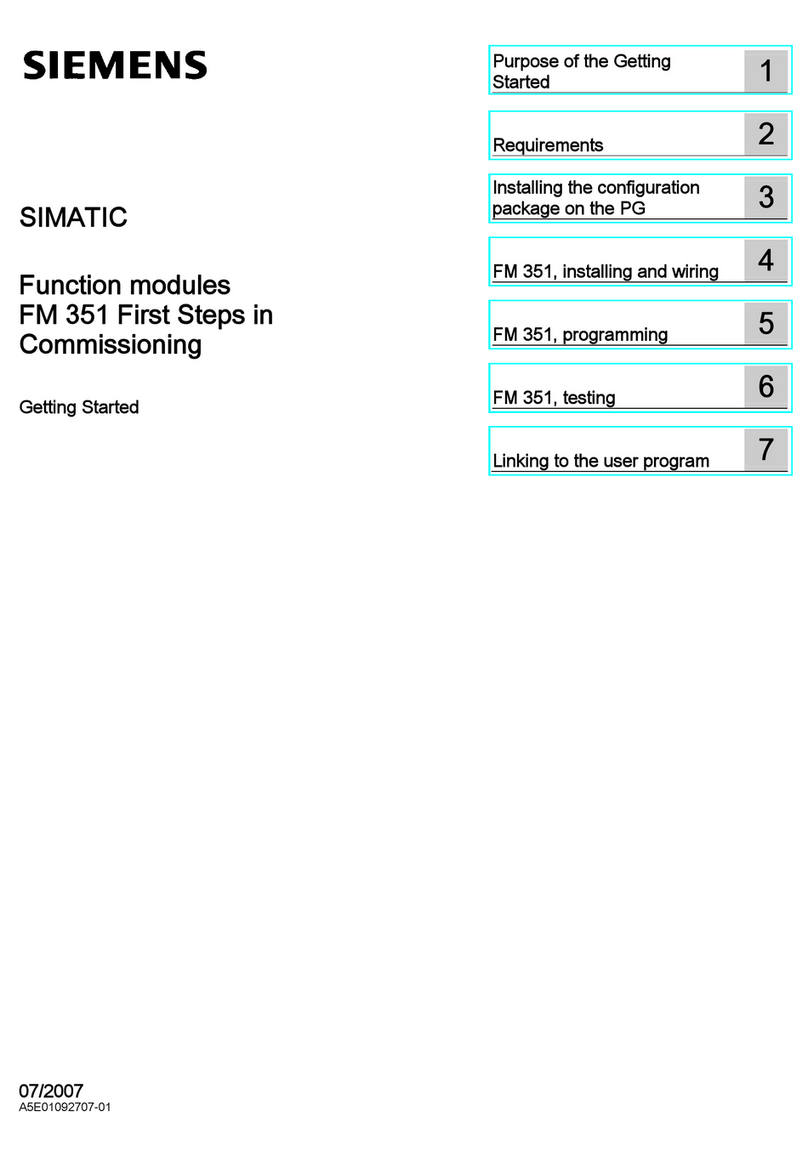
Siemens
Siemens SIMATIC FM 351 Getting started
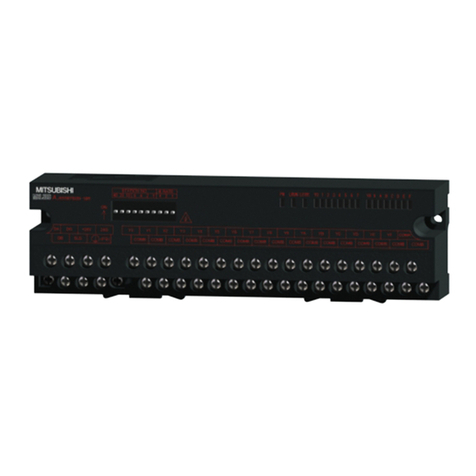
Mitsubishi Electric
Mitsubishi Electric AJ65SBTB2N-16R user manual

VitaLight
VitaLight 576841 user manual
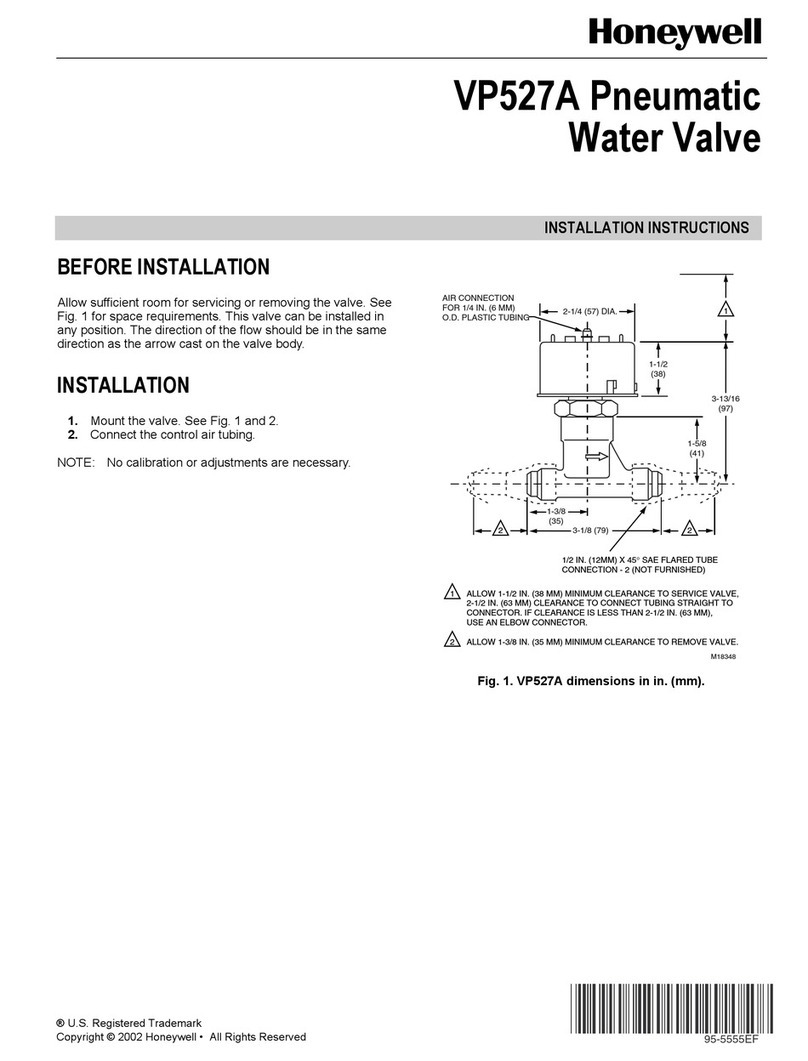
Honeywell
Honeywell VP527A installation instructions
